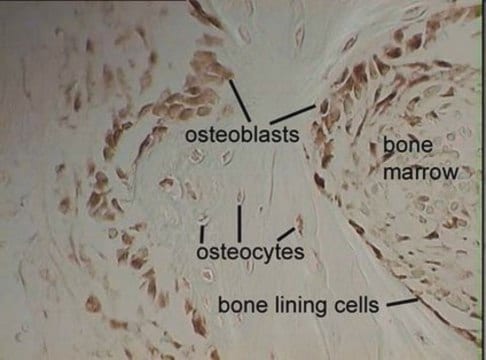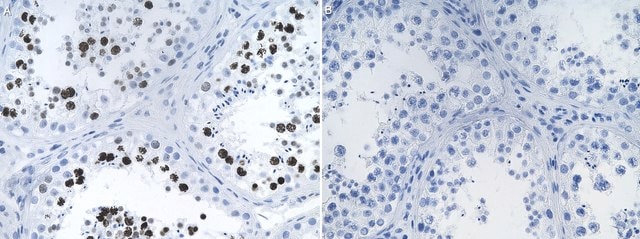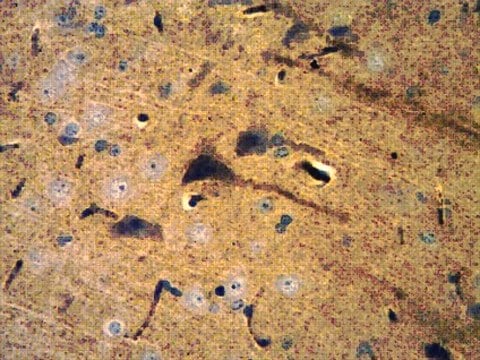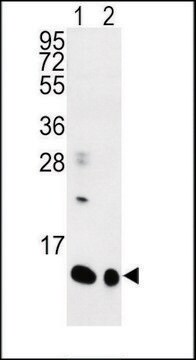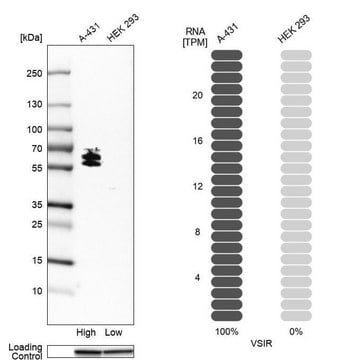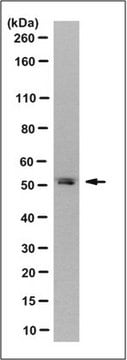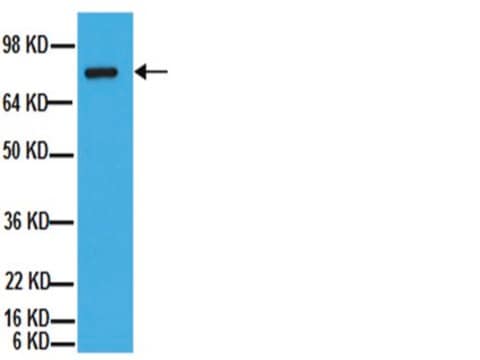MAB3291
Anti-HRAS Antibody
CHEMICON®, mouse monoclonal, 7D7.2
Sinonimo/i:
Anti-C-BAS/HAS, Anti-C-H-RAS, Anti-C-HA-RAS1, Anti-CTLO, Anti-H-RASIDX, Anti-HAMSV, Anti-HRAS1, Anti-RASH1, Anti-p21ras
About This Item
Prodotti consigliati
Nome del prodotto
Anti-H-Ras Antibody, clone 7D7.2, clone 7D7.2, Chemicon®, from mouse
Origine biologica
mouse
Livello qualitativo
Forma dell’anticorpo
purified antibody
Tipo di anticorpo
primary antibodies
Clone
7D7.2, monoclonal
Reattività contro le specie
rat, mouse, human
Produttore/marchio commerciale
Chemicon®
tecniche
ELISA: suitable
western blot: suitable
Isotipo
IgG2b
N° accesso NCBI
N° accesso UniProt
Condizioni di spedizione
wet ice
modifica post-traduzionali bersaglio
unmodified
Informazioni sul gene
human ... HRAS(3265)
Specificità
Immunogeno
Applicazioni
Signaling
MAP Kinases
ELISA
Optimal working dilutions must be determined by end user.
Stato fisico
Stoccaggio e stabilità
WARNING: The monoclonal reagent solution contains 0.1% sodium azide as a preservative. Due to potential hazards arising from the build up of this material in pipes, spent reagent should be disposed of with liberal volumes of water.
Altre note
Note legali
Esclusione di responsabilità
Non trovi il prodotto giusto?
Prova il nostro Motore di ricerca dei prodotti.
Codice della classe di stoccaggio
10 - Combustible liquids
Classe di pericolosità dell'acqua (WGK)
WGK 2
Punto d’infiammabilità (°F)
Not applicable
Punto d’infiammabilità (°C)
Not applicable
Certificati d'analisi (COA)
Cerca il Certificati d'analisi (COA) digitando il numero di lotto/batch corrispondente. I numeri di lotto o di batch sono stampati sull'etichetta dei prodotti dopo la parola ‘Lotto’ o ‘Batch’.
Possiedi già questo prodotto?
I documenti relativi ai prodotti acquistati recentemente sono disponibili nell’Archivio dei documenti.
Il team dei nostri ricercatori vanta grande esperienza in tutte le aree della ricerca quali Life Science, scienza dei materiali, sintesi chimica, cromatografia, discipline analitiche, ecc..
Contatta l'Assistenza Tecnica.